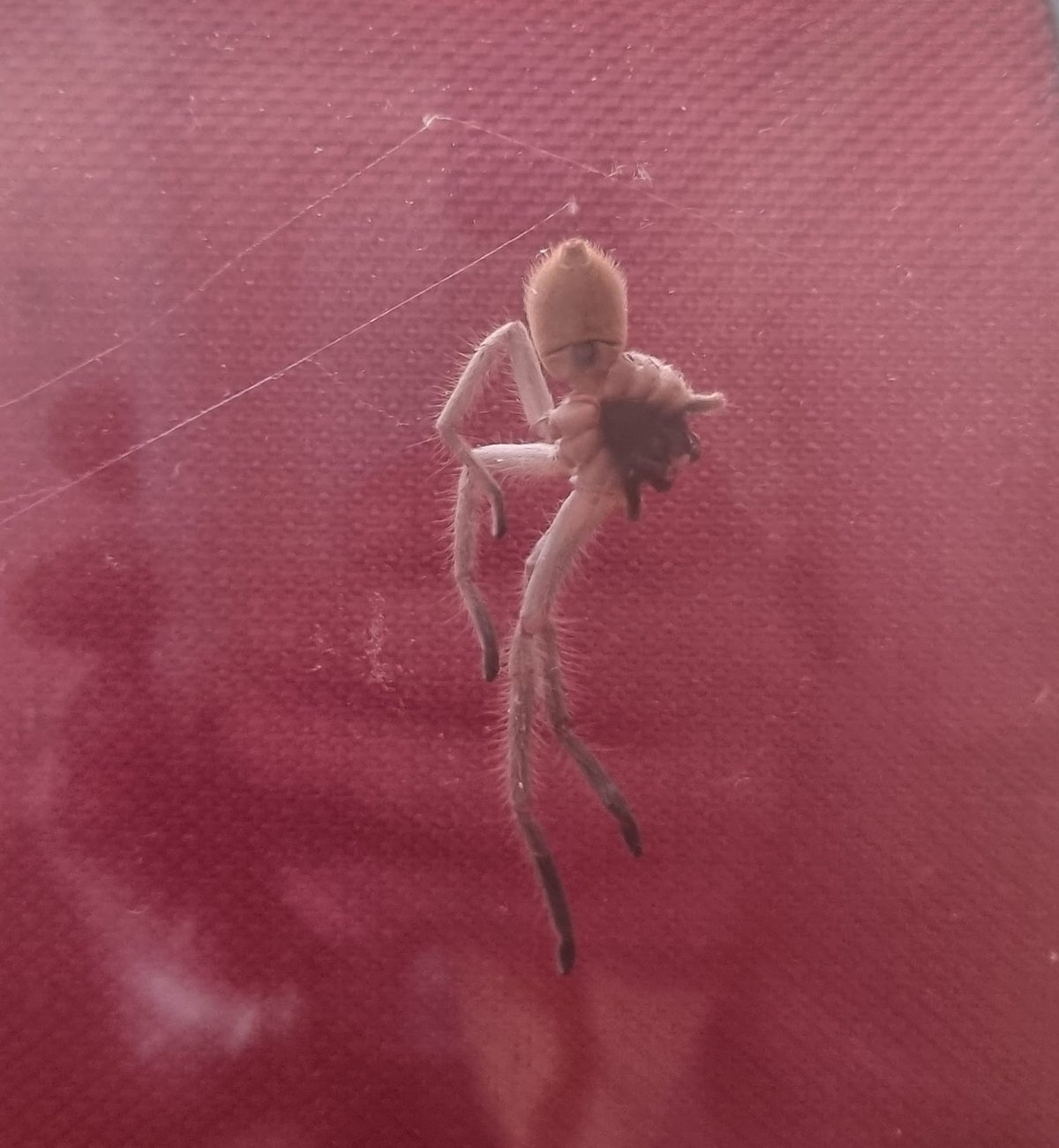Eight spindly legs are one of a spider's most distinctive features. And yet these resilient arachnids have been known to survive with over half of them missing.
Jul Smith found one such specimen outside her window at her home in Sydney, Australia, with four of her legs gone. "She had four legs on one side of her body and none on the other but was still very quick," she told Newsweek. "Honestly, it didn't seem to hold her back much at all."
The spider, which Smith's children named Lunaspider after their friend, was still fairly large despite missing half of her leg span. "I would estimate her longest leg as being minimum 7 centimeters [just under 3 inches]," Smith said. "So if she had all limbs, [she would have had a] 15-centimeter [6-inch] leg span."
On April 25, Smith shared a photo of the spider to Facebook's Australian spider identification page, where it was identified as a social huntsman.
Huntsmen spiders have a nearly worldwide distribution, with over 1,300 species described and hundreds more waiting to be discovered. Huntsmen do not spin webs—instead, they actively hunt for their food.
As their name suggests, social huntsmen, Delena cancerides, are often found in large groups that consist of mothers with their almost grown-up offspring. The young spiders remain with their mothers for up to a year, which is nearly half of their lifespan. This behavior is unusual among spiders. It is thought to have emerged because of a lack of suitable housing for this species (a problem that may be all too relatable for people in their 20s and 30s who are still living at home).

What is not uncommon is for spiders to lose one or more of their legs. Juvenile spiders are able to grow back these missing limbs as they grow and shed their exoskeletons in a process called molting. However, the spider on Smith's front window was a fully grown adult, which means she has no more molts left and there's no chance she will regrow her missing limbs.
To keep the spider hydrated, Smith dripped some water near her perch on the windowsill. "She quickly ran over to drink, which intrigued the kids," Smith said.
After nearly a week on Smith's windowsill, Lunaspider has not been seen for a couple of days.
"She's been in the wars, hasn't she, poor thing. Hopefully, she's still got some life left in her. She must be able to get around OK to end up where she is," commented one user on Smith's post.
"It's quite amazing seeing them like that," said another. "Tough little buggers."
Uncommon Knowledge
Newsweek is committed to challenging conventional wisdom and finding connections in the search for common ground.
Newsweek is committed to challenging conventional wisdom and finding connections in the search for common ground.
About the writer
Pandora Dewan is a Senior Science Reporter at Newsweek based in London, UK. Her focus is reporting on science, health ... Read more
To read how Newsweek uses AI as a newsroom tool, Click here.








